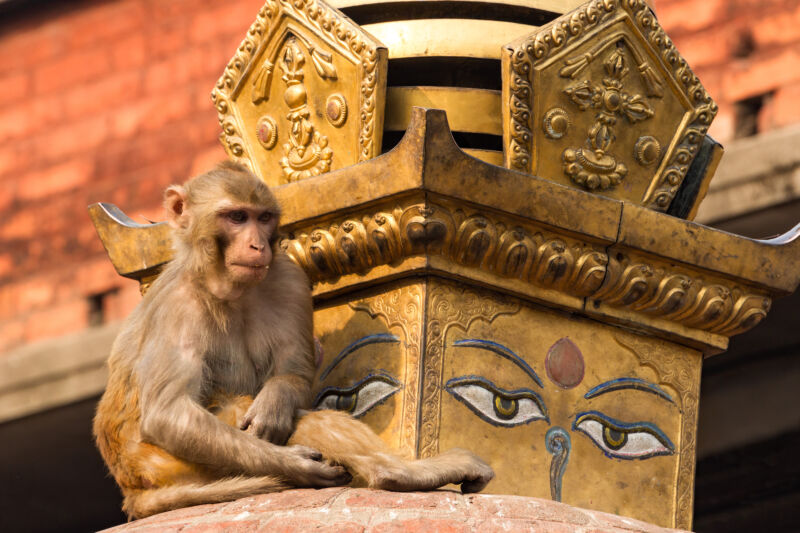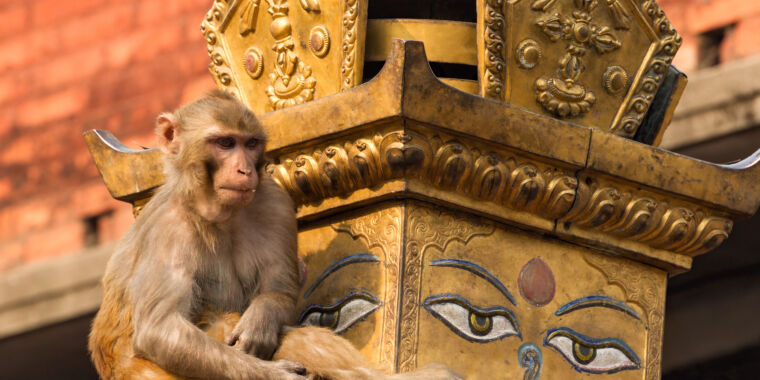
Walnut was born on June 3, 1995, at the start of what would become an unusually hot summer, on an island called Rum (pronounced room), the largest of the Small Isles off the west coast of Scotland. We know this because since 1974, researchers have diligently recorded the births of red deer like her, and caught, weighed and marked every calf they could get their hands on—about 9 out of every 10.
Near the cottage in Kilmory on the northern side of the island where the researchers are based, there has been no hunting since the project began, which allowed the deer to relax and get used to human observers. Walnut was a regular there, grazing the invariably short-clipped grass in this popular spot. “She would always just be there in the group, with her sisters and their families,” says biologist Alison Morris, who has lived on Rum for more than 23 years and studies the deer year-round.
Walnut raised 14 offspring, the last one in 2013, when she was 18 years old. In her later years, Morris recalls, Walnut would spend most of her time away from the herd, usually with Vanity, another female (called a hind) of the same age who had never calved. “They were often seen affectionately grooming each other, and after Walnut died of old age in October 2016, at the age of 21—quite extraordinary for a hind—Vanity spent most of her time alone. She died two years later, at the grand age of 23.”
Are old hinds left behind?
Such a shift in social life is common in aging red deer females, says ecologist Gregory Albery, now at Georgetown University in Washington, DC, who spent months on the island studying the deer during his PhD training. (Males roam around more and associate less consistently with others, so they are harder to study.) “Older females tend to be observed in the company of fewer others. That was easy to establish,” he says. “The more difficult question to answer has been why we are seeing this pattern, and what it means.”
The first question one should ask, Albery says, is whether individual deer alter their behavior to associate with fewer others as they age, or whether individuals that associate with fewer others tend to live to an older age. This is the kind of question that many researchers are unable to answer when simply comparing individuals of different ages. But long-term studies like the one at Rum can do so through long-term tracking of populations. Forty times a year, the deer are censused by fieldworkers like Morris who recognize the deer on sight and meticulously note where they are and with whom.
When they accounted for the age and survival of the deer in their analysis, Albery and colleagues found that the link between age and number of associates remained solid: Social connections do, indeed, decrease as individuals age. Might this be because many of the older deer’s friends have died? On the contrary, Albery and colleagues found that older deer who had recently lost friends tended to hang out with others more often.
So why do old hinds have fewer contacts? Part of the explanation may be that they don’t range as widely as they grow older. Studying the deer for a couple of months would not have exposed this trend, says Albery: It was only revealed by tracking the same individuals through time. “Deer with a larger home range generally live longer,” he explains, so an analysis at any single point in time would show larger ranges for older deer and suggest that home ranges expand with age. Tracking individuals through time reveals the opposite is true. “Their home ranges decrease in size as they age,” Albery says.
It is unlikely that older deer move around less because they are concentrating on the core of their favorite habitat, says Albery. The center of their range shifts with age, and they are observed more often in taller and probably less nutritious vegetation, away from the most popular spots. This indicates there might be some kind of competitive exclusion going on: Perhaps more energetic, younger deer with offspring to feed are colonizing the best grazing patches.
On the other hand, older deer may also have different preferences. “Perhaps the longer grasses are easier to eat when your incisors are too worn to clip the short grass everyone else is after,” Albery says. Plus the deer don’t have to bend over as far to reach the longer grass.
A recent study by Albery and colleagues in Nature Ecology & Evolution found that older deer reduce their contacts more than you’d expect if their shrinking range was the only cause. That suggests the behavior may have evolved for a reason—one that Albery prosaically summarizes as, “Deer shit where they eat.”
Gastrointestinal worms are rampant on the island. And though the deer do not get infected through direct contact with others, being at the same place at the same time probably does increase their risk of ingesting eggs or larvae in the still-warm droppings of one of their associates.
“Younger animals need to put themselves out there to make friends, but perhaps when you’re older and you already have some, the risk of disease just isn’t worth it,” says study coauthor Josh Firth, a behavioral ecologist at the University of Oxford.
In addition, says ecologist Daniel Nussey of the University of Edinburgh, another coauthor, “there are indications that the immune system of aging deer is less effective in suppressing worm infections, so they might be more likely to die from them.”

